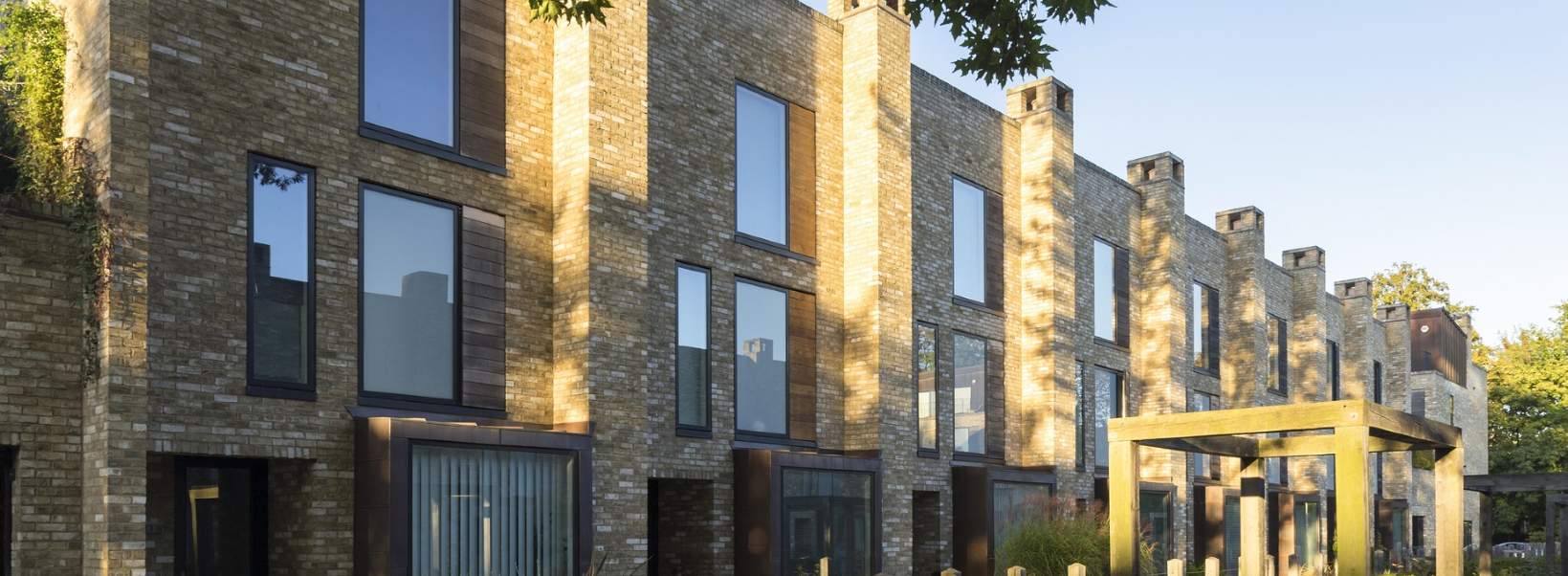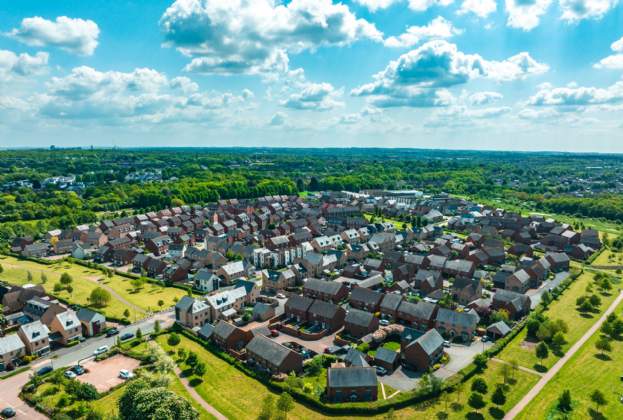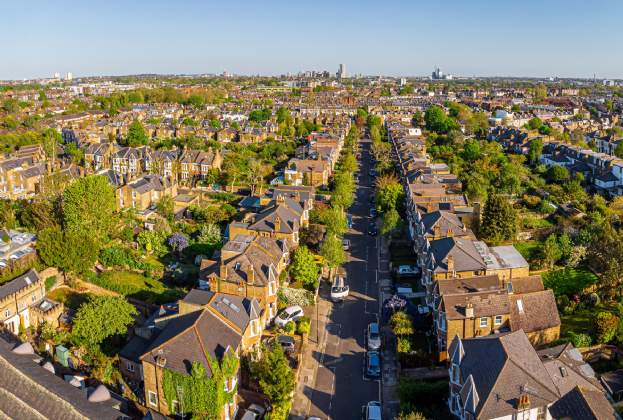The Accordia development in central Cambridge set a new benchmark for the construction of high density housebuilding in the UK. In 2008 it became the first housing development to win the prestigious Stirling Prize, awarded by the Royal Institute of British Architects (RIBA) to the building that has made the biggest contribution to the evolution of architecture in that year. It demonstrates how large-scale newbuild can move the needle on the national perception of good housing design.
Constructed by Countryside Properties and Redeham Homes in three phases designed by Feilden Clegg Bradley Studios, Maccreanor Lavington, and Alison Brooks Architects, the development consists of 378 dwellings in a mixture of flats and houses for a variety of tenures, including 30% affordable.
The scheme is designed around a series of communal gardens, intended to bring residents together. Private outside space was delivered through terraces and internal courtyards, and a range of floorplans and property sizes ensured the development attracted a mix of demographics for the mixed-tenure properties.
The buildings themselves feature high quality materials and detailing, blending light coloured Cambridge Gault bricks with oak and copper to make a varied yet coherent colour palette. The clear influence Accordia has had on Cambridge’s design vernacular has become increasingly visible in other newbuild developments including at Eddington, to the north-west of the city centre, and the Southern Fringe towards Trumpington.
Yet Accordia also highlights the challenges of creating new mixed communities from scratch. Alterations to the buildings by some residents sparked debates over the protection of architectural merit and coherence of the design with the need for places to change over time. This emphasises that living together is also about mediating emerging tensions in constructive and inclusive ways, where the visions of the architects and planners must be balanced with the needs of the diverse residents in mixed-tenured schemes.
Accordia transaction values compared to Cambridge average to Oct-23

.jpg)



.jpg)
(1).jpg)
(2).jpg)

.jpg)
